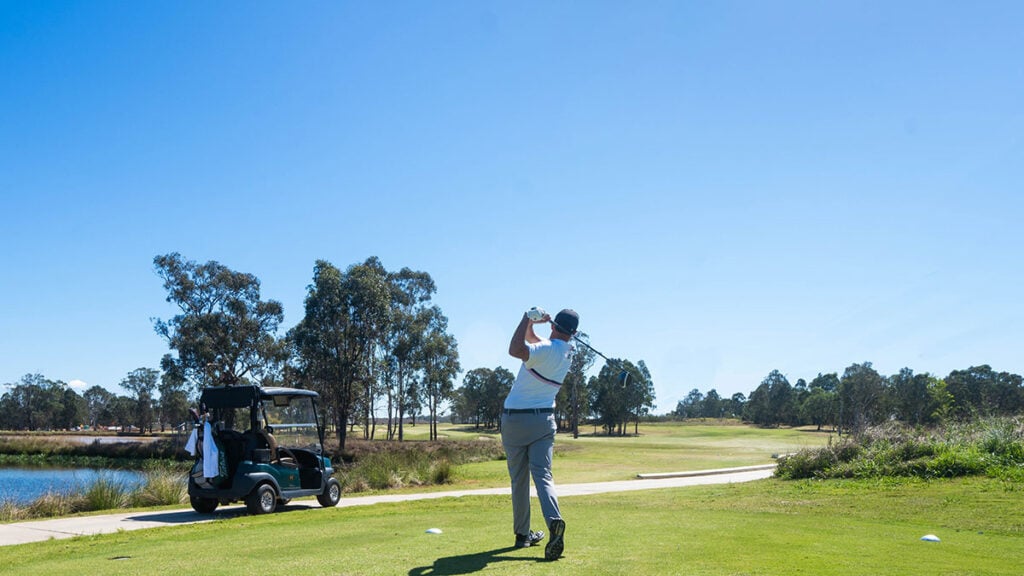IN THEORY, PGA Champions Tour players should have a shelf life. After all, every year there’s a new set of 50-year-olds to put pressure on the aging stars.
But 59-year-old Bernhard Langer is showing no signs of slowdown. At this year’s Senior British Open [inset] the ageless German took down the old axiom that you can’t win a golf tournament in the first round, you can only lose it.
 With a two-under 69 on the Thursday at Royal Porthcawl in Wales, in windy and rain conditions that saw the scoring average come in a 76.8, Langer established a lead that would not be topped. He then spent the next three days toying with the rest of the field, posting scores of 74-65-72 to win by three strokes over Corey Pavin.
With a two-under 69 on the Thursday at Royal Porthcawl in Wales, in windy and rain conditions that saw the scoring average come in a 76.8, Langer established a lead that would not be topped. He then spent the next three days toying with the rest of the field, posting scores of 74-65-72 to win by three strokes over Corey Pavin.
As Langer’s list of superlatives grows, they’re worth repeat if only to help convince people that they’ve actually happened.
This was his fifth senior Major victory since turning 58; only three other players in history had won a single senior Major at that age (Tom Watson, Hale Irwin and John Jacobs).
He has won his 10 senior Majors in 48 starts, giving him a win percentage of 20.83. Meanwhile, for his career he has led or held a share of the lead after 42 of 192 rounds (21.88 percent).
That rate increases to 42.5 percent at the Senior British, where Langer has now led after 17 of 40 rounds. His worst finish in the event in 10 career starts is a T-12.
So how does this man continue to fire on all cylinders as he nears 60 years of age?
Top New York teacher Michael Jacobs says Langer’s mind is definitely stronger than most, but what he does with his swing is something easier for most players to copy.
“Why is it that some players like Langer, Sam Snead and Tom Watson seem to be able to play forever without getting hurt, and they’re always around the leaderboard?” Jacobs says. “I’d argue that it’s because they’re ‘structurally sound’.”
At address, Langer has all of his joints lined up over each other – shoulders, hips, knees and ankles, says Jacobs.
“He puts the least amount of stress on the muscles around the spine, and he’s able to consistently accelerate the joints in sequence.” He’s in position to do the same thing over and over, without no pain or restriction. “Doing it this way puts the load and stress on your joints – which are designed to handle it – and not your back, which isn’t.”
“Centration,” as Jacobs calls it, won’t make the putts for you, but starting that way will make you more likely to avoid having to add compensations into your swing.
Plus, you’ll be way ready for the senior club championship.




